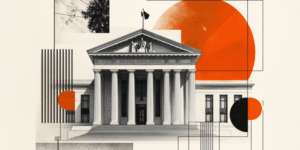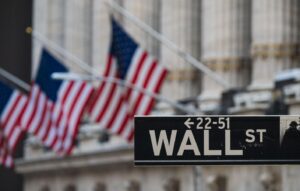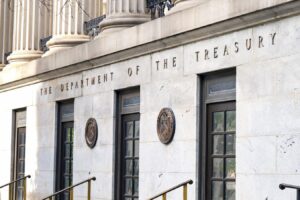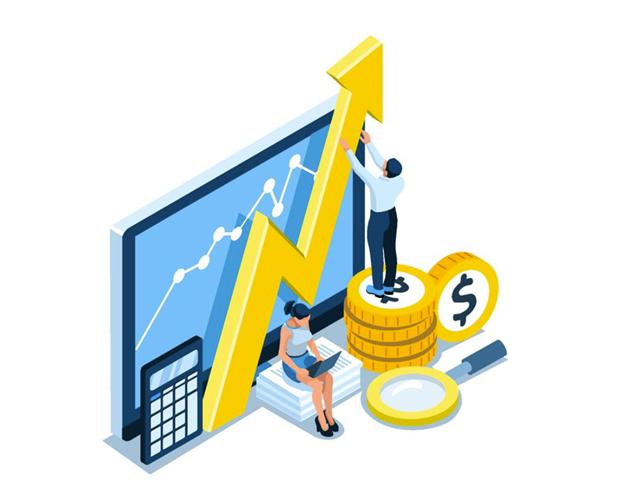Something as dry-sounding as a Treasury yield might not seem like it impacts your wallet, but it absolutely does. Yields are flashing warning signs about how investors feel about the economy, and the ripple effects are hitting everything from mortgage rates to savings accounts.
When investors expect the economy to slow down, they buy safer things like government bonds—which pushes yields lower and signals worry about the future.
According to the U.S. Department of the Treasury, the 10-year Treasury yield sits at 4.36% as of June 12, 2025, among the highest levels in recent years.
Right now, one of the smartest money moves you can make is parking your savings in a high-yield account that benefits from rising Treasury yields.
Related: Looking for the perfect banking solution? Compare products from multiple banks with Forbes Advisor.
How Rising Treasury Yields Affect You
Treasuries are government bonds, and their yields reflect how much the government must pay to borrow money. These yields also set the tone for interest rates, including those of mortgages, student loans and savings accounts.
“When Treasury yields climb, it’s not just Wall Street that takes notice. Main Street feels it, too,” says Christopher M. Naghibi, executive vice president and COO at First Foundation Bank. “The 10-year Treasury is like the economy’s mood ring. When yields are rising, it usually means investors expect inflation to hang around or they’re uneasy about the Fed’s next move.”
When yields rise, borrowing gets more expensive and saving becomes more rewarding. Here’s how it plays out for consumers:
- Mortgages: Rates are pushed higher, making home loans costlier. New homebuyers face bigger monthly mortgage payments.
- Credit cards: APRs climb, making carrying a balance pricier.
- Savings accounts: Yields trickle down into higher APYs for deposit accounts, so savers passively earn more.
- Investments: Stocks may face pressure, while bond funds can grow more appealing.
“For consumers, you already can feel that borrowing has gotten palpably more expensive,” says Naghibi. “On the flip side, savers finally get to feel like they’re not being punished. Just a few years ago, you couldn’t get a liquid money-market account with a meaningful interest rate. Now you have a charcuterie board of options to choose from.”
How Treasury Yields Influence Savings Rates
When Treasury yields go up, the interest you earn on savings accounts and CDs often rises, too. That’s not just a market quirk. It’s actually built into how banks are allowed to compete for your deposits.
According to the Federal Deposit Insurance Corporation (FDIC), the cap on how much interest certain banks can offer is partly tied to Treasury yields. For example, the national rate cap for a 12-month CD is calculated as the greater of either the national average plus 75 basis points or 120% of the current yield on similar U.S. Treasury securities plus 75 basis points. As Treasury yields rise, banks get more room to offer higher savings rates.
Read more: Our picks of the best high-yield savings accounts
Turn Rate Hikes Into Wins: Save, Pay Down and Profit
High-yield savings accounts (HYSAs) are one of the best ways to benefit from rising Treasury yields without taking on market risk. These accounts are FDIC-insured, meaning your money is protected up to $250,000 per depositor, per insured bank, per ownership category.
“Let’s say you have $10,000 sitting in a regular [savings] account. You’d earn about a dollar a year in interest. With a high-yield savings account at 4.5%, you’d earn around $450—without doing anything,” says Naghibi.
Rising yields can feel intimidating, but they also open the door to strategic financial decisions:
- Open a high-yield savings account: Shop around for high APYs.
- Pay down variable-rate debt: Especially credit cards and HELOCs.
- Compare CD rates: Consider short-term CDs with fixed rates.
- Diversify your investments: Bond funds and laddered Treasuries can offer stability.
- Stay calm: Volatility is part of the cycle. Don’t panic-sell.
“Lock in fixed rates where you can, consider laddering CDs, and if you’re feeling fancy, a well-balanced bond fund might help you ride the ups and downs without losing your shirt,” Naghibi says.
Read more: Our picks of the best CD rates
Top High-Yield Savings Accounts
To help you take advantage, here are high-yield savings accounts we vetted based on APY, fees, accessibility and digital experience. All are FDIC-insured.
Synchrony High-Yield Savings
Best for: Stand-alone savings and emergency funds
Synchrony stands out with strong customer service, a solid APY and rare ATM access for a savings account. Details as of 6/5/25.
- Competitive yield with no monthly fees
- No minimum balance
- ATM access included
Heads up: Synchrony is online-only and doesn’t offer checking.
American Express High-Yield Savings
Best for: Simplicity and brand familiarity
This digital account is easy to use and offers a higher-than-average yield for a big-name bank. Details as of 6/5/25.
- Strong customer service
- No monthly fees
- Smooth online experience
Note: No ATM access or check-writing available.
Barclays Online Savings
Best for: Fee-free savings with no strings attached
With zero fees and no minimum, this account makes it easy to start saving, even with $1. Details as of 6/5/25.
- Daily compounding interest
- Unlimited transfers and withdrawals
- No fees, ever
Heads-up: No checking accounts or ATM access.
Marcus by Goldman Sachs High-Yield Online Savings
Best for: Support and stability
Marcus offers a solid APY, 24/7 customer support and zero account hassles. Details as of 6/5/25.
- No fees or minimums
- Award-winning customer service
- Easy to use online
Caveat: You’ll need a second account for ATM or checking access.
Rising Treasury yields influence how much we pay for loans and how much we can earn on savings. While you can’t control bond markets or government spending, you can take smart steps to keep your money safe and growing.
“The 10-year is more than just a number,” says Naghibi. “It’s a pulse check on the economy, and it pays (literally) to pay attention. I watch it daily, multiple times through the day.”
Related: Looking for the perfect banking solution? Compare products from multiple banks with Forbes Advisor.
Read the full article here
















